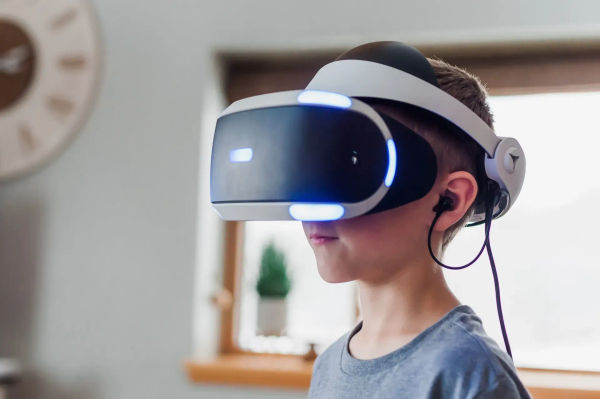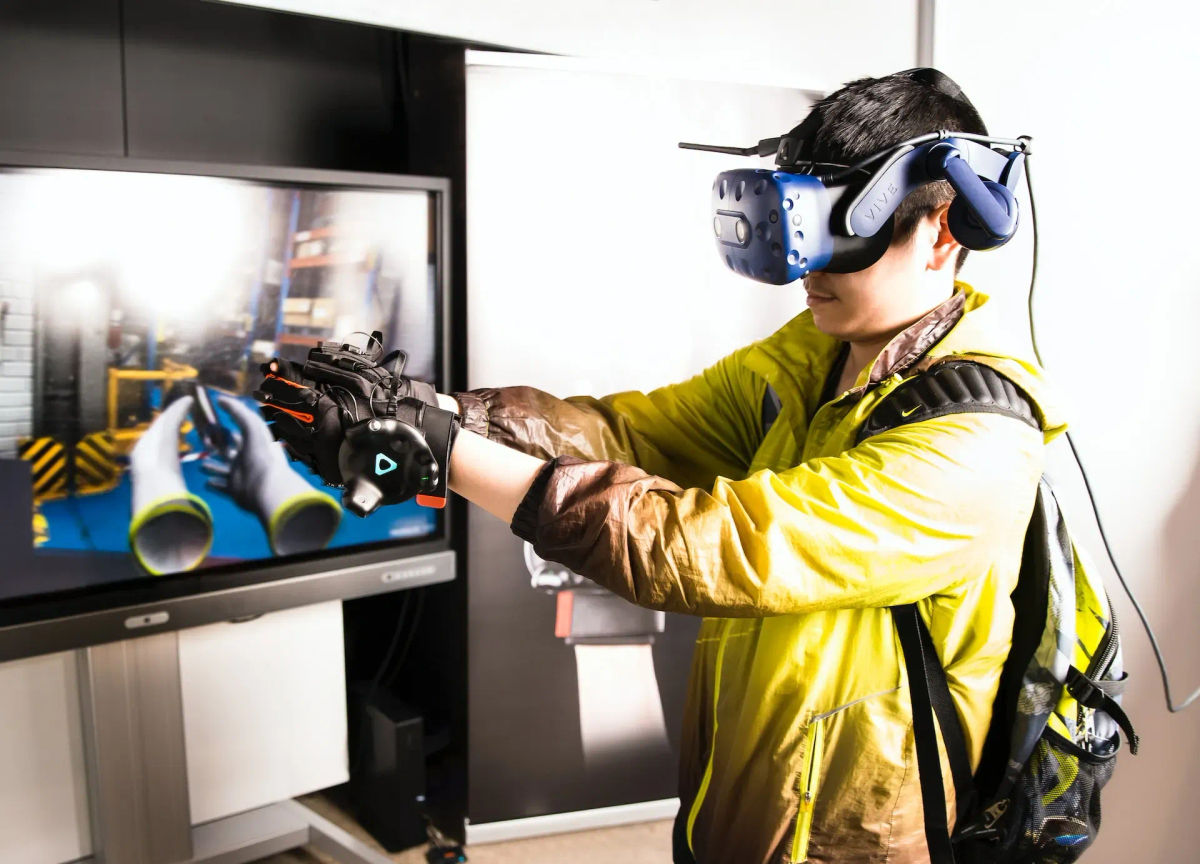Exploring the Intersection of AR and VR Gaming in Online Casinos
July 5, 2023

The advancement of technology has led to the creative implementation of innovations. New tech like augmented reality (AR) and virtual reality (VR) are slowly changing the landscape of the online gaming industry.
Given how easily players can access online casinos nowadays, AR and VR could readily revolutionize the experience in the modern gambling experience. To keep up with the trend, online gambling platforms must maintain traction and engagement.
One way to do this is by implementing innovative methods to spice up their games. To match players' demands with technological advancement, casinos need to be creative in keeping their players engaged. Therefore, using the latest technological trends of AR and VR in their games will benefit the casino industry.
| Casino | No Deposit Bonus Offer | Promo Code |
 | $25 On the House + 100% up to $1500 Deposit Bonus | SQORECASINO |
 | $20 on sign-up + 100% up to $1000 Deposit Bonus | SQOREGATA |
 | $10 Sign-up Bonus + Up to $1000 Deposit Bonus | CASMIXLAUNCH |
Gambling problem? Call 1-800-GAMBLER (MI/NJ/PA/WV) or visit www.1800gambler.net (WV). 21+. Physically present in MI/NJ/PA/WV only. Eligibility restrictions apply. Void in ONT.
Diverse Applications of AR
AR overlays digital information, such as images, videos, or 3D models, onto the real-world environment. Although it has gained significant attention in recent years, its roots can be traced back several decades.
The concept of AR was first coined by computer scientist Tom Caudell in the early 1990s while working at Boeing. Caudell used the term to describe a digital display system that aided aircraft assembly workers by overlaying virtual wireframe models onto physical structures. This early application of AR showcased its potential to enhance productivity and streamline complex tasks.
In the following years, AR technology continued to evolve. AR has found applications in various fields, including gaming, healthcare, education, and marketing. However, it wasn't until the widespread adoption of smartphones with built-in cameras, GPS, and powerful processors that AR gained mainstream recognition.
The release of the top-rated mobile game Pokemon Go in 2016 marked a turning point for AR. The groundbreaking AR game by Niantic, Inc. took the world by storm. Pokemon Go sent millions of players on real-world adventures to capture virtual Pokemon creatures using smartphones.
This unprecedented success made Pokemon Go a cultural phenomenon and served as a shining example of how AR technology could revolutionize the gaming industry and beyond.
Entering New World with VR
VR is a cutting-edge technology that immerses users in a fully digital, computer-generated environment. VR provides a simulated reality that can be visually and sometimes even physically experienced.
While VR and AR share similarities in their goal of enhancing user experiences, they differ in the level of immersion and interaction they offer. Unlike AR, which overlays digital elements in the real world, VR creates a complete digital environment that users can explore and interact with.
VR typically involves wearing a headset that covers the user's eyes and ears. These headsets block out the physical surroundings to immerse users into a virtual world that can be incredibly realistic or fantastical.
The roots of VR can be traced back to the 1960s when the first attempts at creating immersive experiences were made. However, it wasn't until recent years, with advancements in technology and computing power, that VR gained momentum and became more accessible to a broader audience.
VR excels in transporting users to entirely new realms. VR allows users to engage in activities and experiences that would otherwise be impossible or impractical. VR has found applications across various industries, from gaming and entertainment to training simulations.
While AR enhances the real world by adding digital elements, VR offers a more isolated and immersive experience. However, this isolation can also be seen as a limitation, as users are disconnected from their immediate surroundings and unable to interact with the real world while immersed in VR.

Exploring AR and VR Options for Online Gambling
The convergence of AR and VR technologies is set to bring change to the online casino industry. While both offer unique benefits, AR may hold a more favorable position in the future due to its wider accessibility and ability to integrate seamlessly with existing devices.
AR can potentially bring the reality of a casino directly to players. For instance, players can use their smartphones to access AR-enabled online casinos and enjoy virtual gambling experiences from their homes. Through AR, players can see realistic 3D representations of card tables and slot machines superimposed onto their physical surroundings.
Imagine a scenario where players can use their smartphones to engage in an AR-powered live dealer game. They can see the real-life dealer through their device's camera. Meanwhile, virtual cards and betting options are integrated into the AR interface.
Furthermore, AR's compatibility with existing devices means that players do not need to invest in expensive VR hardware to enjoy the benefits of enhanced online casino experiences. This lowers the barrier to entry and makes AR more appealing to a wider range of players.
Despite AR’s possible industry domination in the future, VR currently boasts a larger library of games. There are a few reasons why there may be more VR games available at the moment.
VR technology has undergone extensive development, with early pioneers investing in VR hardware and software development. This longer history of VR has allowed developers more time to create and release a more comprehensive range of VR games.
While AR offers unique possibilities, it presents additional technical challenges compared to VR. AR requires the seamless integration of digital elements with the real world, which can be complex to achieve. Overcoming these technical hurdles and delivering smooth AR experiences may require more time and investment from developers. Therefore, a slower pace of AR game development.
Both AR and VR have their ways of transforming the online casino industry. AR's accessibility, integration with existing devices, and ability to bring the casino experience directly to players may position it as the preferred technology in the future. Meanwhile, with more current knowledge in VR, there are many VR options to choose from.
How is AR used in online casinos?
AR overlays virtual elements onto the real-world environment, allowing players to see virtual casino games or digital content superimposed onto real surfaces.
For example, players can display a virtual poker table on their coffee table or see virtual slot machines on their mobile screens. They can also physically manipulate virtual cards, chips, or game controls on a physical table or surface.
How is VR used in online casinos?
VR allows players to enter a fully simulated virtual casino environment. This tech provides an immersive experience replicating a physical casino's atmosphere.
Players can engage in a wide range of virtual casino games, such as virtual slots, poker, roulette, or blackjack, where they can interact with virtual cards, chips and game elements.
What are some examples of AR and VR online casino games?
"Gonzo’s Quest VR: The Ultimate 3D Adventure" takes the popular online slot game Gonzo's Quest and brings it to life in a VR environment. Players can join the adventurer Gonzo on his quest for treasure with stunning 3D graphics and interactive gameplay like never before.
Another example is "Casino VR Poker: A Multiplayer Poker Experience.” This multiplayer VR poker game provides a realistic and social poker experience. Players can create virtual avatars, interact with others at the virtual poker table, and play various variations such as Texas Hold'em.







